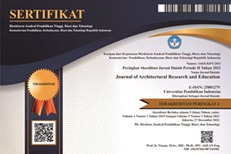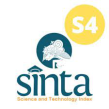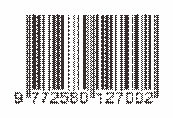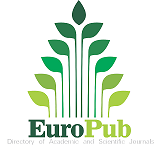RAFLESIA (Indonesian Solar Reflective House) as a Sustainable Solution for Uninhabitable Housing in Cirebon Regency
Abstract
Full Text:
PDFReferences
Akbari & Kolokotsa. (2016). Three decades of urban heat islands and mitigation technologies research. Energy and Buildings Vol 133, Pages 834-842. https://doi.org/10.1016/j.enbuild.2016.09.067
Aulia, Aura. (2024). Pemerintah Kabupaten Cirebon akan Perbaiki 271 Rutilahu di 2024. https://rri.co.id/daerah/531073/pemerintah-kabupaten-cirebon-akan-perbaiki-271-rutilahu-di-2024
Febrina, Setiati, Wahyu, Pratama & Kurnia. (2024). Penggunaan Cat Reflektif Surya pada Atap Bangunan Untuk Menurunkan Suhu Ruang pada Bangunan Sekolah. Elektriese: Jurnal Sains dan Teknologi Elektro Vol 14. https://www.jurnal.itscience.org/index.php/elektriese/article/view/4847/3605
Haniah & Bakhri. (2022). Sosialisasi, Aktualisasi dan Evaluasi Program Rutilahu Di Kota Cirebon. Dimasejati Vol 7 No 1. https://www.syekhnurjati.ac.id/jurnal/index.php/dimasejati/article/view/10820/4395
Irfeey, Chau, Sumaiya, Wai, Muttil & Jamei. (2023). Sustainable Mitigation Strategies for Urban Heat Island Effects in Urban Areas. Sustainability 2023, 15(14), 10767; https://doi.org/10.3390/su151410767
Karimuna, S., et.al. (2024). Kesehatan Lingkungan Pemukiman dan Perkotaan. Purbalingga: Eureka Media Aksara.
Paramita, Beta. “DESAIN RENDAH EMISI High Albedo Materials.” ResearchGate, February 2022, https://www.researchgate.net/publication/358610932_DESAIN_RENDAH_EMISI_High_Albedo_Materials. Accessed 12 July 2024.
Paramita, Beta. “Cool Roofs for UHI COUNTERMEASURE: a Green Building added value.” ResearchGate, August 2022, https://www.researchgate.net/publication/362908792_Cool_Roofs_for_UHI_COUNTERMEASURE_a_Green_Building_added_value. Diunduh 12 July 2024. dst.
Ramadhan, Try, et al. “Study of Cost and Construction Speed of Cladding Wall for Lightweight Steel Frame (LSF).” Buildings, vol. 12, no. 1958, 2022, pp. 1-14, https://www.mdpi.com/journal/buildings.
Santamouris & Yun. (2020). Recent development and research priorities on cool and super cool materials to mitigate urban heat island. Renewable Energy Vol 161 Pages 792-807. https://doi.org/10.1016/j.renene.2020.07.109
Tian, Joshua & Zhang. (2023). The Advancement of Research in Cool Roof: Super Cool Roof, Temperature-adaptive roof and Crucial Issues of Application in Cities. https://doi.org/10.1016/j.enbuild.2023.113131
Yang & Wang. (2015). Environmental impacts of reflective materials: Is high albedo a ‘silver bullet’ for mitigating urban heat island? Renewable and Sustainable Energy Reviews Vol 47 Pages 830-843. https://doi.org/10.1016/j.rser.2015.03.092
DOI: https://doi.org/10.17509/jare.v7i1.85260
Refbacks
- There are currently no refbacks.
Copyright (c) 2025 Journal of Architectural Research and Education

This work is licensed under a Creative Commons Attribution-NonCommercial-ShareAlike 4.0 International License.

This work is licensed under a Creative Commons Attribution-ShareAlike 4.0 International License.








